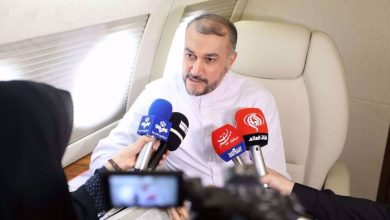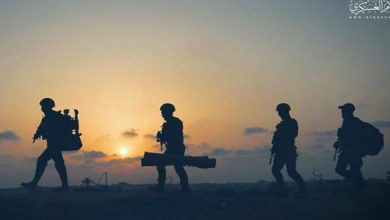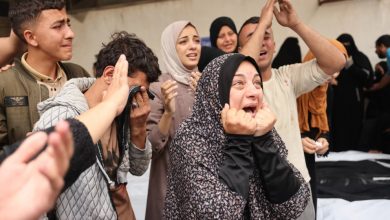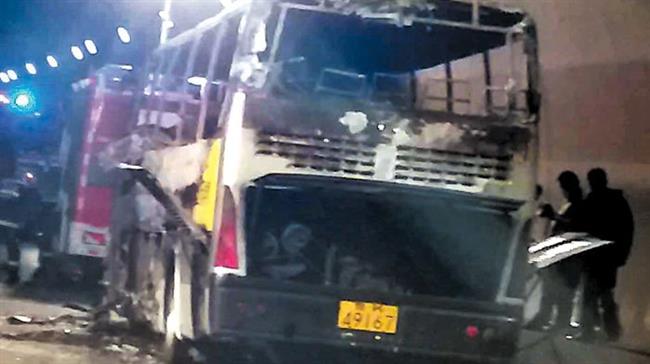Iran’s military capabilities present a formidable challenge to adversaries
In recent developments, Iran has revealed cutting-edge military systems and engaged in significant military exercises, highlighting its defense capabilities and self-sufficiency aimed at deterring potential threats. These actions also serve as a strategic warning to adversarial nations.
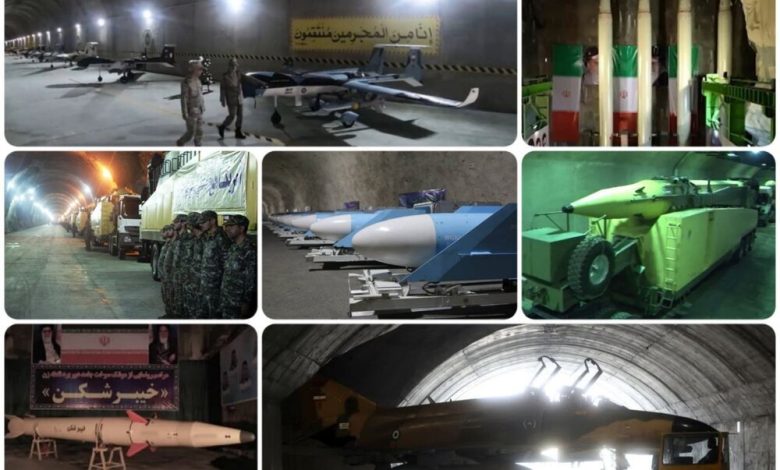
Amid circulating misinformation regarding Iran’s purported isolation and perceived vulnerabilities in its defense capabilities, both the Iranian Army and the Islamic Revolution Guard Corps (IRGC) have recently showcased significant advancements.
In a significant development, Iran has unveiled an underground missile complex operated by the Islamic Revolutionary Guard Corps (IRGC). This event coincided with the integration of new defense equipment into Iran’s army. Additionally, the country conducted military exercises across various strategic locations within its territory.
In a statement delivered in February 2018, Ayatollah Seyyed Ali Khamenei, the Leader of the Islamic Revolution, emphasized the importance of preserving and enhancing Iran’s defense capabilities. His comments were a response to international criticism surrounding the nation’s missile program, affirming Iran’s stance amidst external pressures.
In his address, the Leader underscored the significance of the air defense base as an essential component of the Armed Forces, positioning it at the forefront of Iran’s efforts to counter external adversaries.
The Leader underscored the crucial need to expedite the enhancement of the base’s capabilities and the professional development of Air Force personnel.
Following directives from the nation’s leadership, the Armed Forces of the Islamic Republic, encompassing both the Army and the Islamic Revolution Guards Corps (IRGC), have been actively advancing their military equipment and strengthening their combat preparedness.
In light of the ongoing priority to enhance national defense capabilities, on January 7, 2025, air defense units participated in a comprehensive military exercise designed to simulate the defense of the Natanz nuclear facility located in Iran’s central province of Isfahan. This exercise aimed to demonstrate the units’ complete readiness to protect the nation’s critical infrastructure.
In the initial phase of the exercise, air defense units implemented strategic protocols to safeguard the Natanz nuclear facility located in central Iran.
The air defense division of the IRGC Aerospace Force utilized point-defense strategies to safeguard the nuclear facility at Natanz against various aerial threats in the context of potential electronic warfare scenarios.
Video evidence reveals that the Islamic Revolutionary Guard Corps (IRGC) Ground Forces deployed quadcopters to strike designated targets in the concluding phase of the Great Prophet 19 military exercise.
IRGC Ground Force Commander Brigadier General Mohammad Pakpour announced that the “Payambar-e Azam (The Great Prophet) 19” military exercise was conducted with a focus on security and defense elements.
The Payambar-e Azam 19 exercise, as part of the Islamic Revolutionary Guard Corps Ground Force’s routine annual activities, aims to bolster combat capabilities and enhance proficiency in identifying and addressing potential threats, according to statements from officials.
The Islamic Republic of Iran has issued a stern warning against any threats or violations of its borders, stating that its armed forces stand prepared to deliver a robust and resolute response. Emphasizing the nation’s current state of heightened readiness, the official outlined that ensuring border security remains the foremost priority for the Islamic Revolution Guard Corps.
In recent developments, the Islamic Revolutionary Guard Corps (IRGC) Aerospace Force showcased its newest innovation, the Rezvan loitering drone, as part of the Great Prophet 19 joint military exercises conducted alongside the Iranian army.
In a recent broadcast on national Iranian television, General Alireza Shaykhian, Commander of the Air Defense Unit within the IRGC Aerospace Force, discussed the nationwide military exercises conducted by Iran’s IRGC and Army. General Shaykhian emphasized that, despite the challenges involved in detecting sophisticated F-22 and F-35 fighters, Iran has successfully developed indigenous air defense systems capable of countering these advanced military aircraft.
General Shaykhian has disclosed that there are strategic plans in place for the deployment and utilization of F-22 and F-35 fighter jets.
Following the successful deployment of the Dey-9 air defense system during the nation’s joint air defense exercise, titled “Power,” a significant number of these systems are set to be integrated into the country’s defense apparatus, he announced.
A senior IRGC general stated that the effective execution of this system, alongside others like Dezful and the 3rd of Khordad during the national air defense joint exercise, demonstrated the inaccuracy of claims made by Zionist sources regarding the destruction of Iran’s defense capabilities.
On January 10, a landmark event took place as Iran publicly revealed a state-of-the-art missile complex, a technological feat engineered by local Iranian specialists. This historic unveiling was attended by Major General Hossein Salami, the commander of the Islamic Revolutionary Guards Corps (IRGC).
Following the unveiling of the newly developed underground missile facility, Major General Hossein Salami delivered a speech to personnel of the IRGC Aerospace forces during a formal ceremony.
During the ceremony, he stated that the Iranian armed forces are fully equipped and ready to defend the nation should significant battles or prolonged conflicts arise.
He stated that preparations have been underway for years to address large-scale conflicts and potential prolonged confrontations with major global powers and their regional allies.
In a recent statement, Salami emphasized that the strength acquired by Iranian forces is the culmination of continuous efforts spanning several decades. He asserted that this power is widely acknowledged, noting that the “True Promise” operations represent only a fraction of the nation’s demonstrated capabilities.
The chief of the Islamic Revolutionary Guard Corps (IRGC) announced that the proliferation of missiles and missile systems is on the rise throughout the nation. He emphasized that Iran’s missile capabilities are advancing daily in terms of quality, quantity, and design. In a statement to personnel, he remarked that it is now possible to target hundreds of aircraft simultaneously in successive waves.
He concluded by stating that Iran has steadfastly maintained its independence, identity, credibility, and authority without relying on any external powers for defense.
Brigadier General Mohammad Reza Ashtiani, Deputy Chief of Staff of the Iranian Armed Forces, announced on Sunday that Iran possesses undisclosed weaponry, which remains unknown to its adversaries.
In a recent statement to the press, a military spokesperson announced the existence of undisclosed weaponry, previously unknown to adversaries. The official indicated that certain elements of this arsenal might be trialed during forthcoming military exercises.
He noted that the Iranian Armed Forces have consistently conducted exercises aimed at enhancing their combat capabilities across various domains, thereby ensuring the nation’s defense preparedness.
Iran maintains a vigilant watch over both regional developments and the military exercises conducted by the Islamic Republic, alongside observing their adversaries’ actions, according to Ashtiani, as reported by PressTV.
He stated that Iran is committed to enhancing peace, stability, and tranquility throughout the region.
A spokesperson reaffirmed that the Iranian Armed Forces are closely monitoring and maintaining control over all regional developments.
A senior commander asserted that any excessive demands, deviations, or misconceptions posed by adversaries will be actively countered.
On the same day as Ashtiani’s statements, the Iranian military initiated fresh maneuvers within the nation’s western and northern air defense regions. These exercises encompass the strategic areas of Fordow and Khondab, known for housing uranium enrichment and heavy water production sites.
On Sunday, the Iranian Army showcased an advanced laser-powered air defense system amid military exercises conducted by the Air Defense Forces in the western and northern regions of the country.
On Sunday, the defense forces unveiled equipment dubbed “Seraj” (Light) during exercises conducted in the vicinity of the nation’s Fordow uranium enrichment facility.
The Army has designated the system as just one of several layers offering air defense capabilities to the site.
On Monday morning, the Iranian Army’s Combat Organization was bolstered by the integration of up to 1,000 advanced unmanned aerial vehicles (UAVs), which include strategic, stealth, and anti-fortification models.
The delivery occurred on Monday, subsequent to an announcement by Rear Admiral Habibollah Sayyari, the Army’s Deputy Chief for Coordination, who provided pertinent information regarding the event.
The directive was issued by Army Chief Commander Major General Abdolrahim Mousavi, with oversight provided by Defense Minister Brigadier General Aziz Nasirzadeh. The operation was also monitored by commanders from the Ground Forces, Air Defense Forces, Air Forces, and the Navy.
In a coordinated integration ceremony, drones were simultaneously inducted into the Combat Organization at multiple locations.
The aircraft boasts an impressive range exceeding 2,000 kilometers (approximately 1,242 miles) and is engineered for maximum destructive capacity. Its low Radar Cross Section (RCS) allows it to effectively penetrate adversary defense systems.
The newly developed drones boast extended flight endurance and autonomous capabilities, eliminating the need for manual navigation and control throughout their entire missions.
The drones have been equipped to participate in special operations, bolstering their surveillance and border control effectiveness while also amplifying their combat capabilities and destructive power against distant targets.
In summary, the Iranian Armed Forces and the Islamic Revolutionary Guard Corps (IRGC) have showcased significant achievements and advancements, highlighting Iran’s steadfast dedication to protecting its sovereignty and territorial integrity. The introduction of advanced technologies, along with strategic military exercises and a maintained state of readiness, illustrates Iran’s capacity to address and respond to any emerging threats.
These advancements act as a significant deterrent and bolster the country’s autonomy in its defense capabilities. With a continued focus on innovation and resilience by both the Iranian leadership and its Armed Forces, Iran’s defense prowess is clearly a formidable force, contributing to peace and stability domestically and throughout the region.

